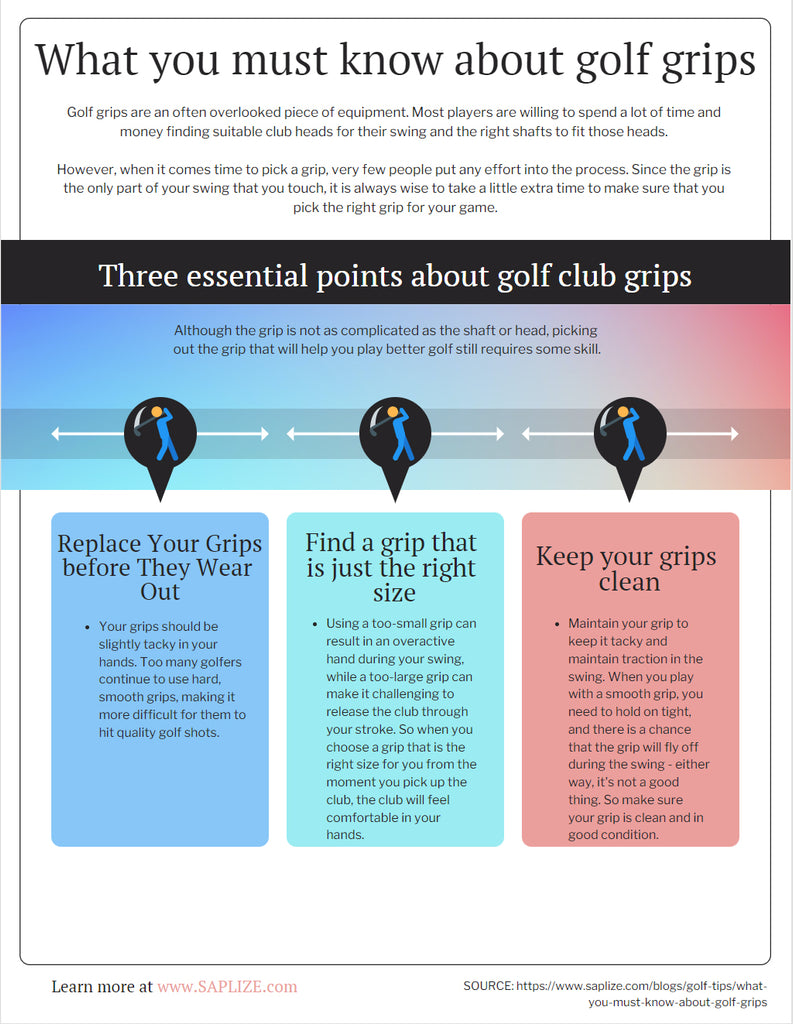What you must know about golf grips
Golf grips are an often overlooked piece of equipment. Most players are willing to spend a lot of time and money finding suitable club heads for their swing and the right shafts to fit those heads. However, when it comes time to pick a grip, very few people put any effort into the process. Since the grip is the only part of your swing that you touch, it is always wise to take a little extra time to make sure that you pick the right grip for your game. There are an impressive number of golf grips on the market today. They range from basic, low-cost models to advanced grips with many features and a high price tag. You will not necessarily need to break the bank for a quality set of golf grips, but you may not want to buy the cheapest you can find either. A good grip that feels comfortable in hand for the golfer can make a massive difference in swinging the club correctly. Bad grips will only make the game more complicated - and golf is not a game that needs to get more complex.
Three essential points about golf club grips
 Although the grip is not as complicated as the shaft or head, picking out the grip that will help you play better golf still requires some skill. The following three points are important for any golfer to remember.
|
USD
- AED
- AFN
- ALL
- AMD
- ANG
- AUD
- AWG
- AZN
- BAM
- BBD
- BDT
- BGN
- BIF
- BND
- BOB
- BSD
- BWP
- BZD
- CAD
- CDF
- CHF
- CNY
- CRC
- CVE
- CZK
- DJF
- DKK
- DOP
- DZD
- EGP
- ETB
- EUR
- FJD
- FKP
- GBP
- GMD
- GNF
- GTQ
- GYD
- HKD
- HNL
- HUF
- IDR
- ILS
- INR
- ISK
- JMD
- JPY
- KES
- KGS
- KHR
- KMF
- KRW
- KYD
- KZT
- LAK
- LBP
- LKR
- MAD
- MDL
- MKD
- MMK
- MNT
- MOP
- MUR
- MVR
- MWK
- MYR
- NGN
- NIO
- NPR
- NZD
- PEN
- PGK
- PHP
- PKR
- PLN
- PYG
- QAR
- RON
- RSD
- RWF
- SAR
- SBD
- SEK
- SGD
- SHP
- SLL
- STD
- THB
- TJS
- TOP
- TTD
- TWD
- TZS
- UAH
- UGX
- USD
- UYU
- UZS
- VND
- VUV
- WST
- XAF
- XCD
- XOF
- XPF
- YER

